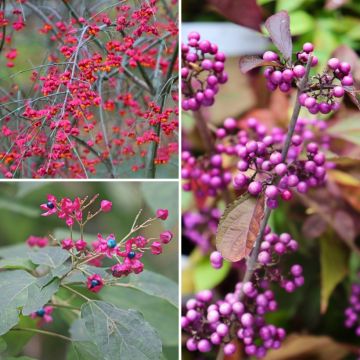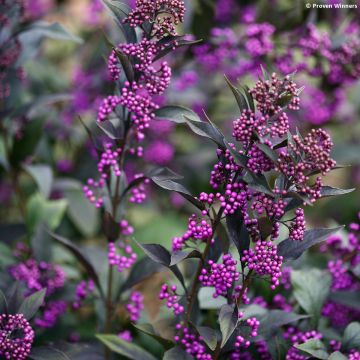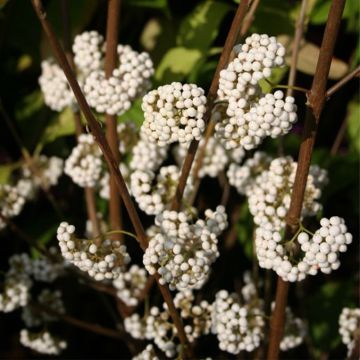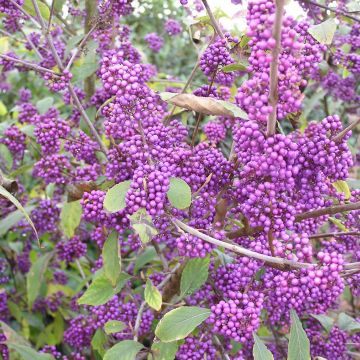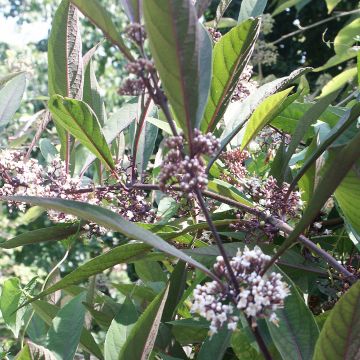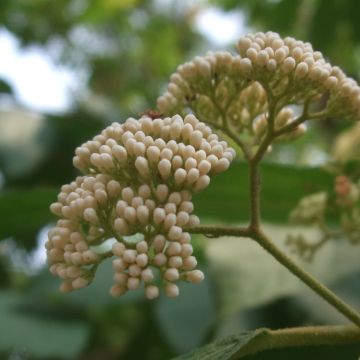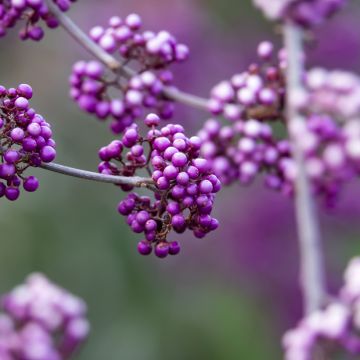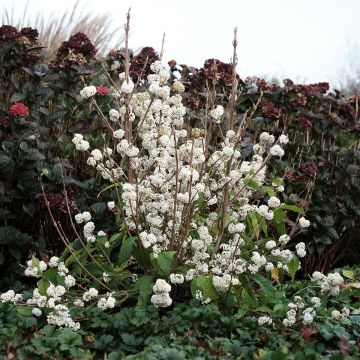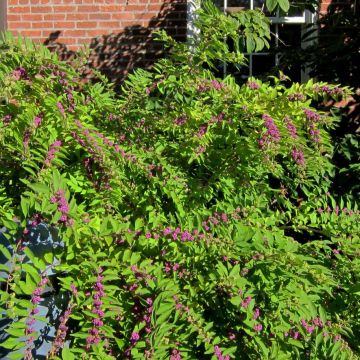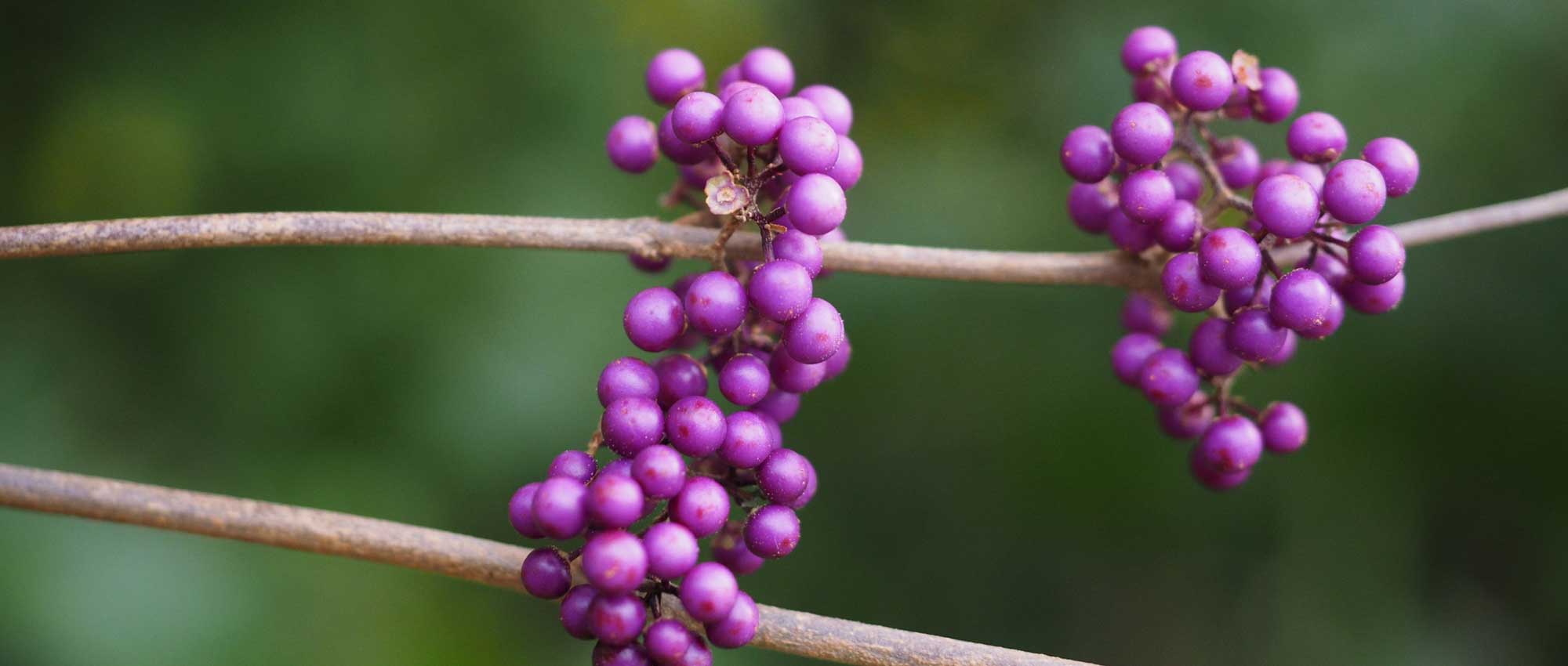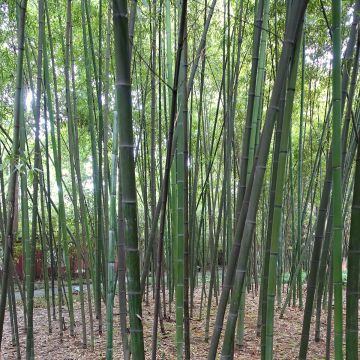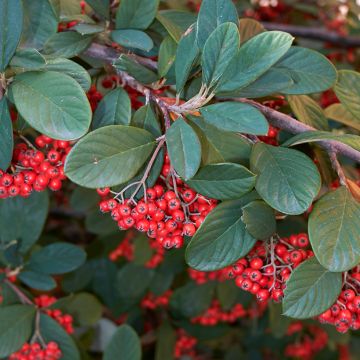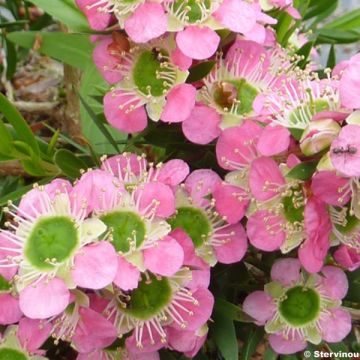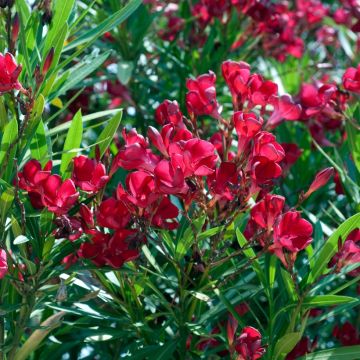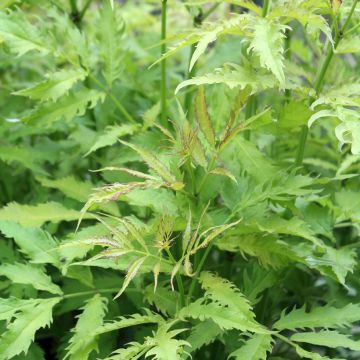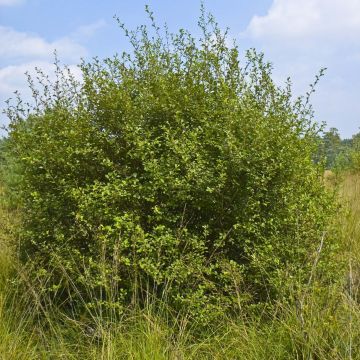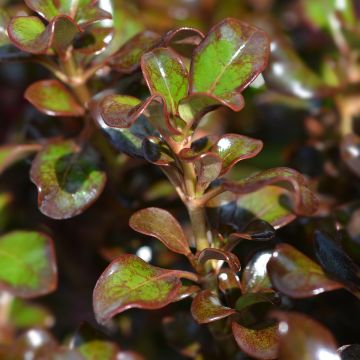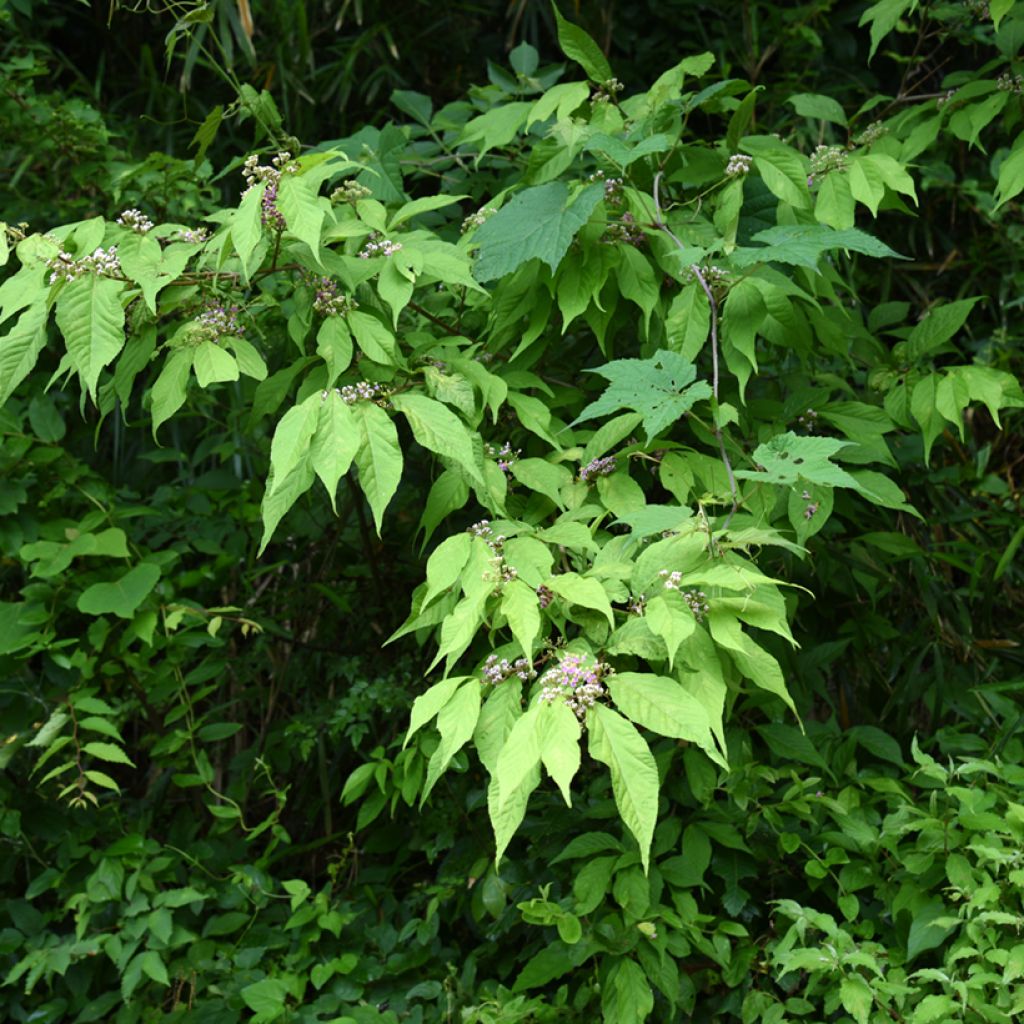

Callicarpa japonica
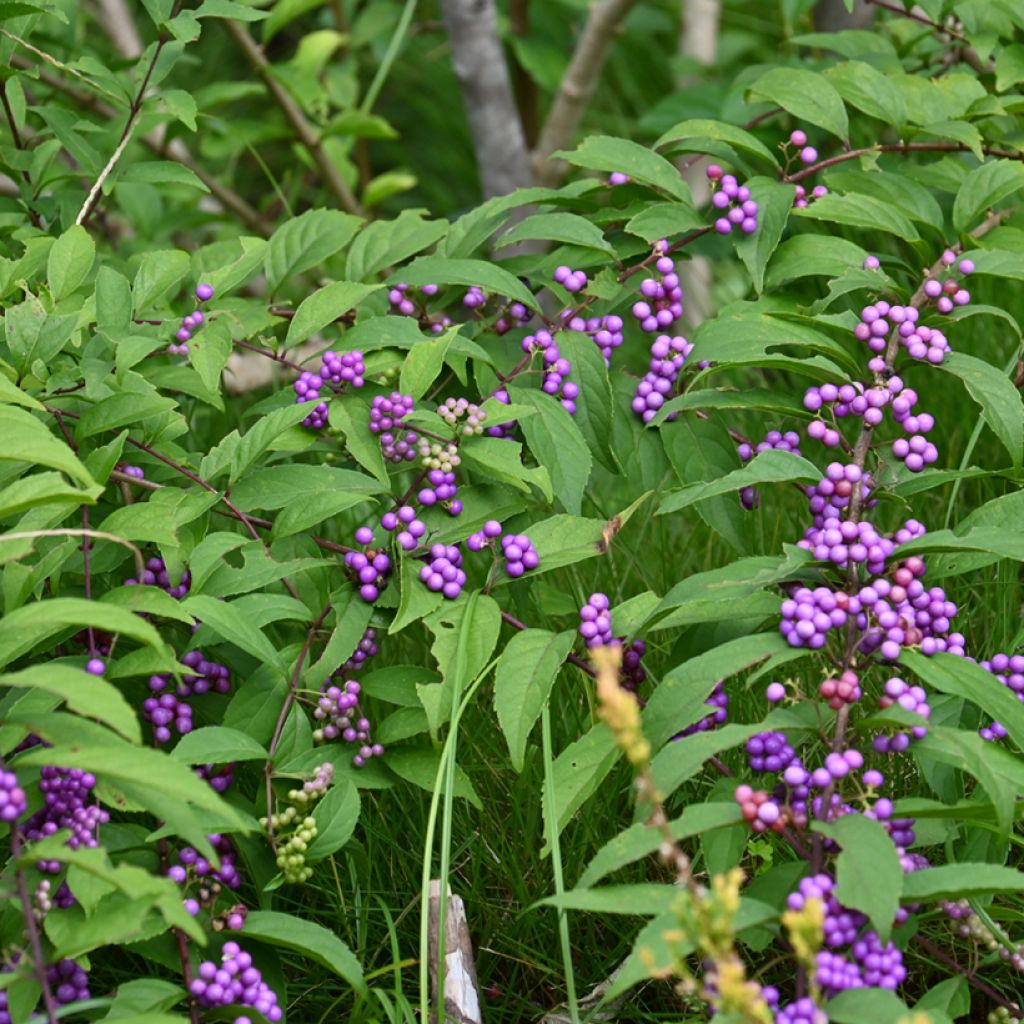

Callicarpa japonica
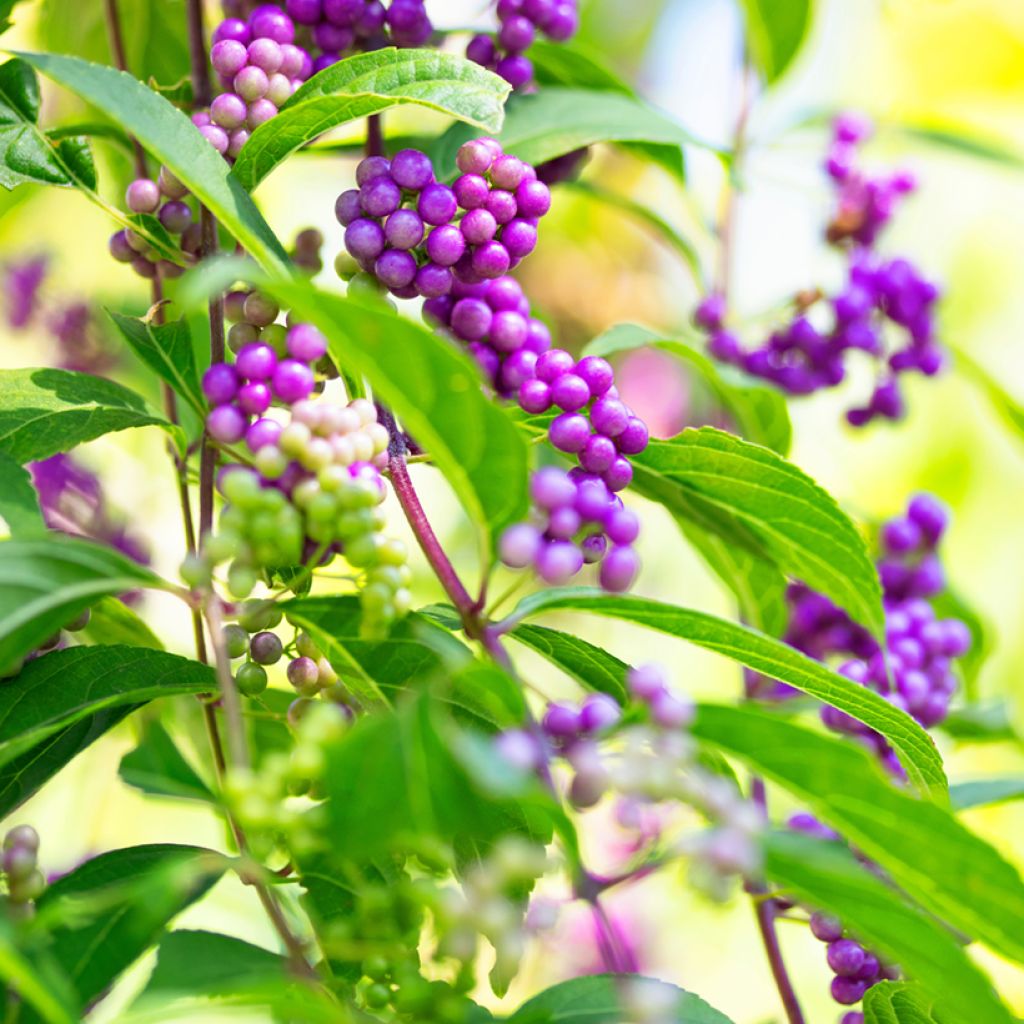

Callicarpa japonica
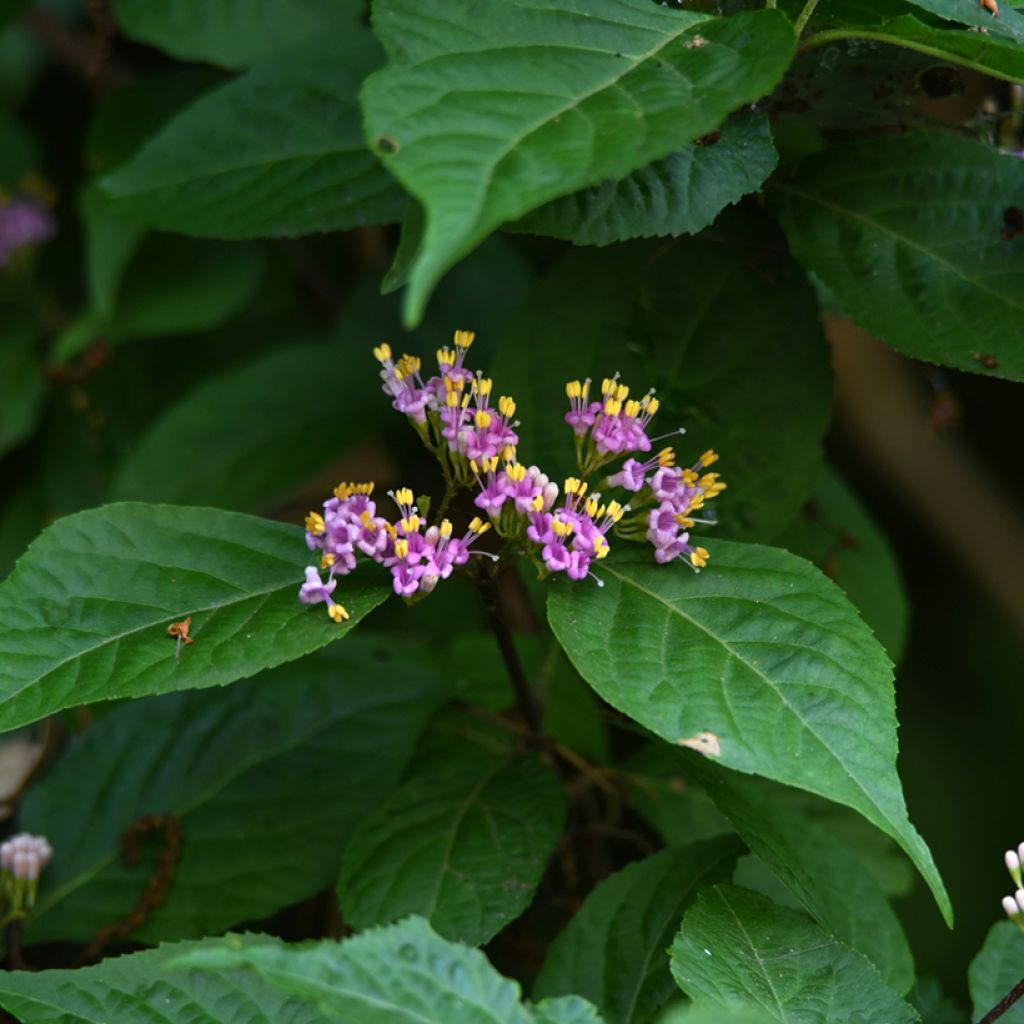

Callicarpa japonica
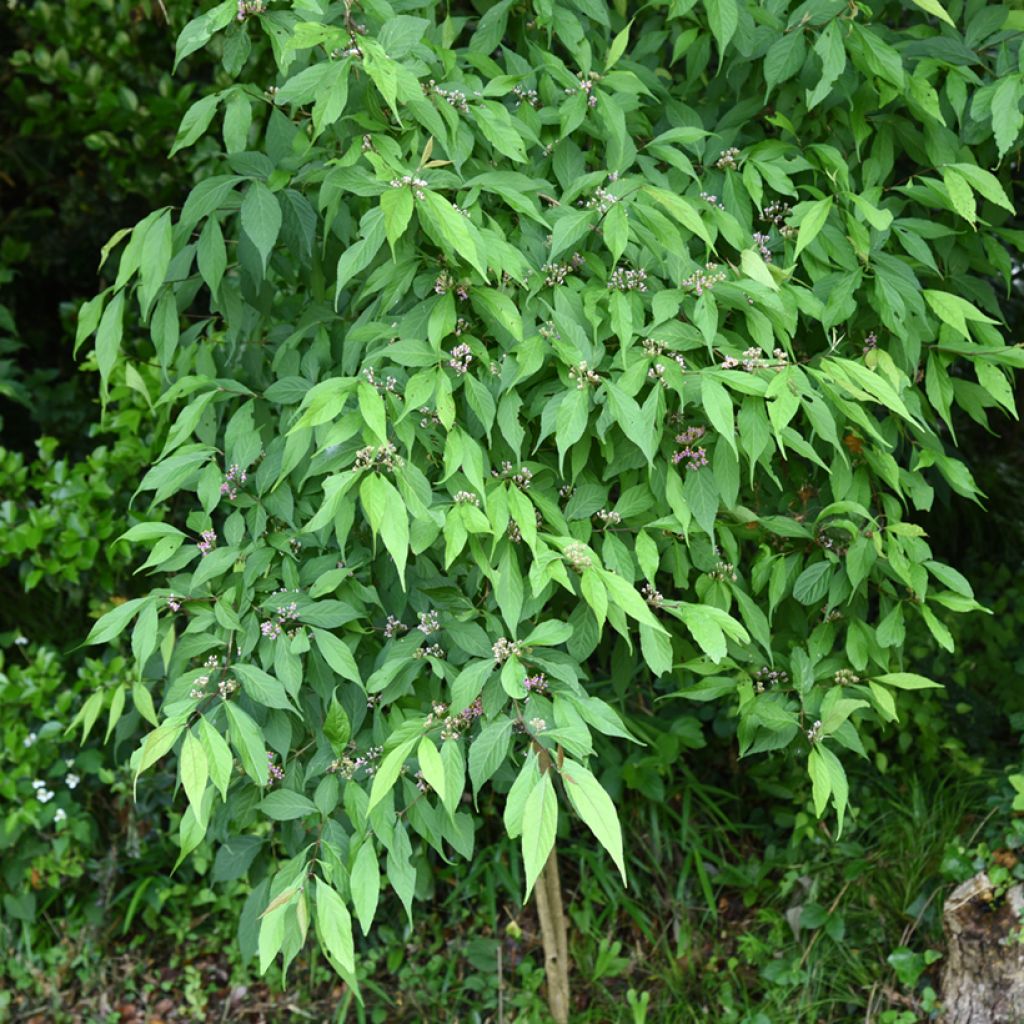

Callicarpa japonica
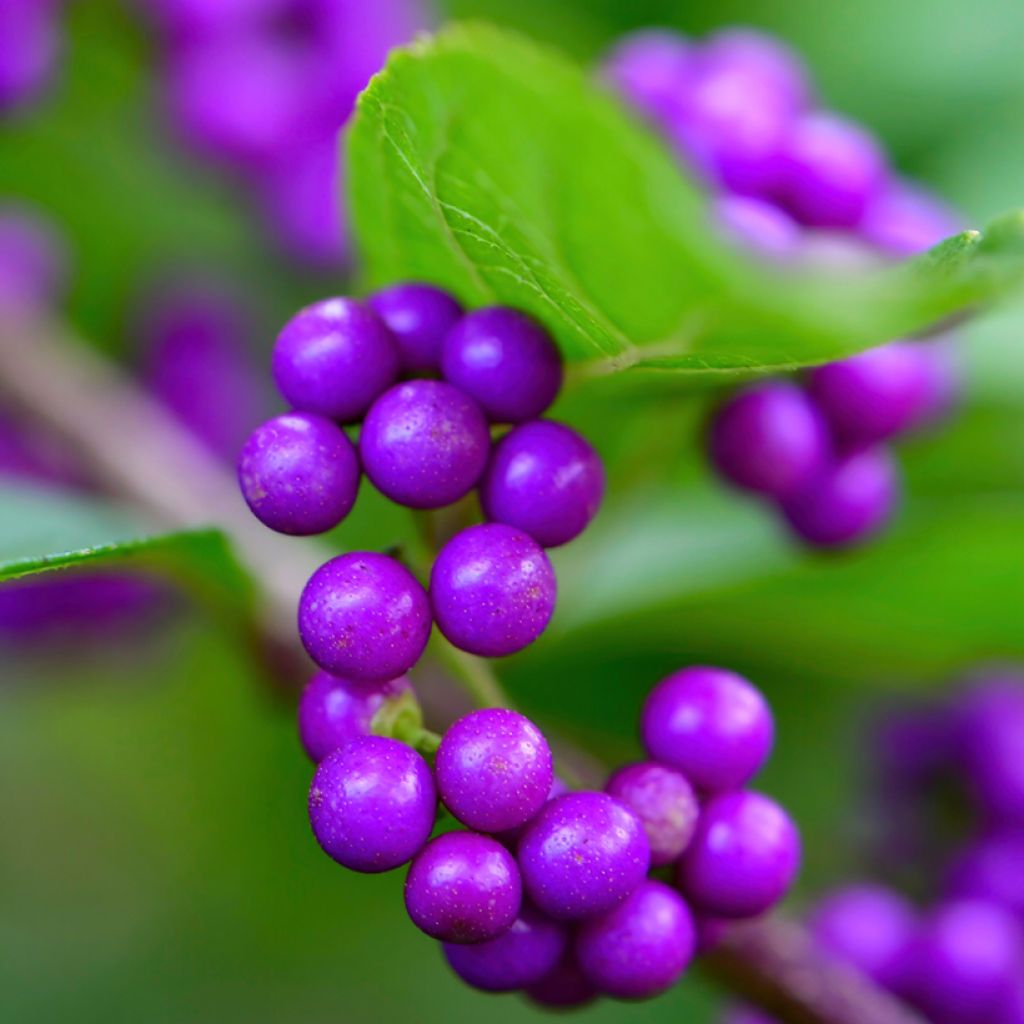

Callicarpa japonica
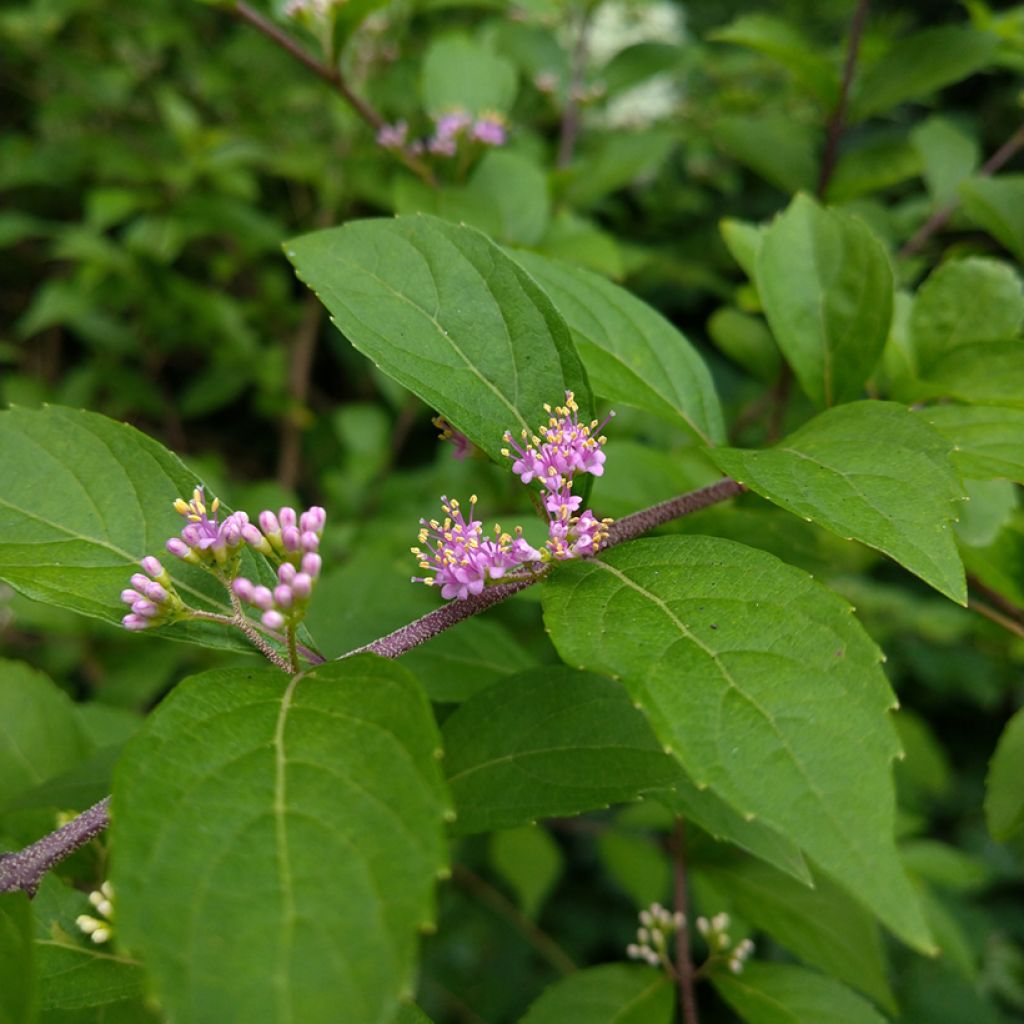

Callicarpa japonica


Callicarpa japonica
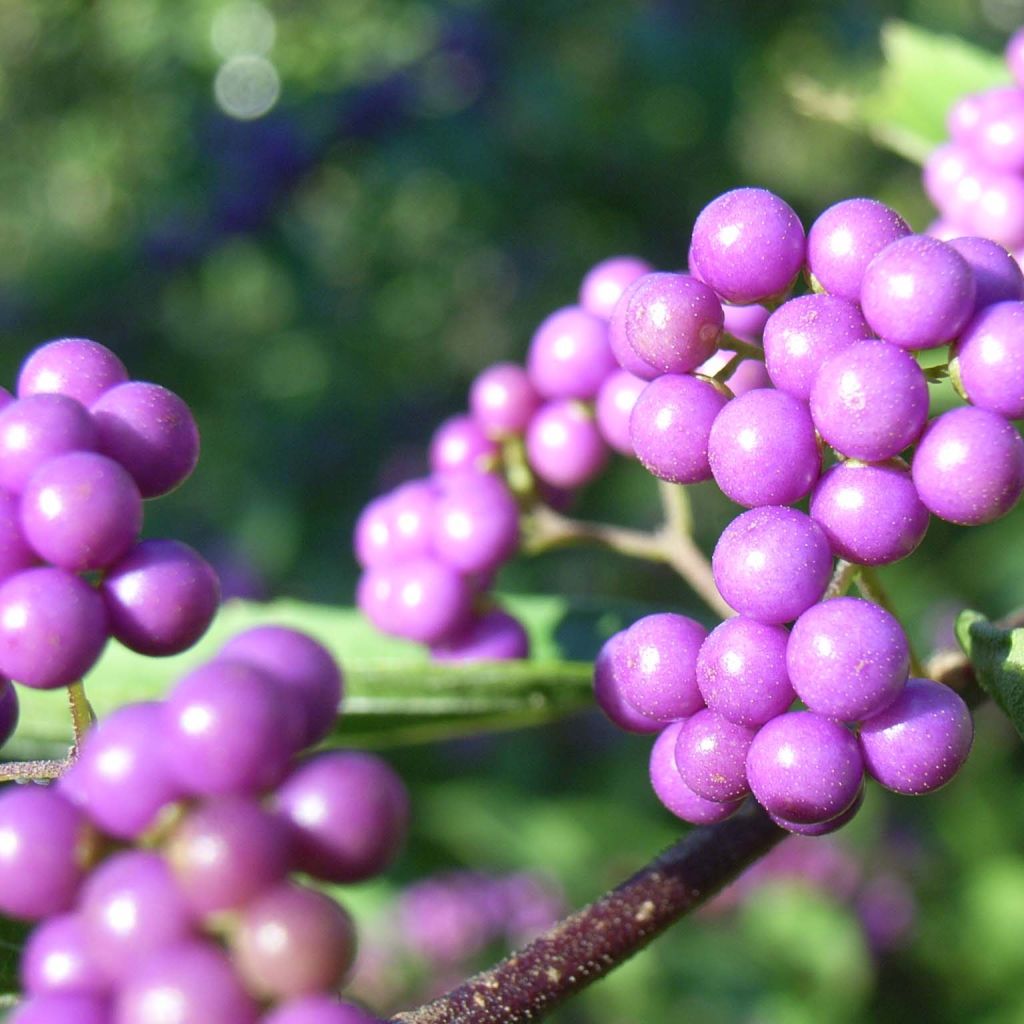

Callicarpa japonica
Callicarpa japonica
Callicarpa japonica
Japanese beautyberry
Special offer!
Receive a €20 voucher for any order over €90 (excluding delivery costs, credit notes, and plastic-free options)!
1- Add your favorite plants to your cart.
2- Once you have reached €90, confirm your order (you can even choose the delivery date!).
3- As soon as your order is shipped, you will receive an email containing your voucher code, valid for 3 months (90 days).
Your voucher is unique and can only be used once, for any order with a minimum value of €20, excluding delivery costs.
Can be combined with other current offers, non-divisible and non-refundable.
Why not try an alternative variety in stock?
View all →This plant carries a 24 months recovery warranty
More information
We guarantee the quality of our plants for a full growing cycle, and will replace at our expense any plant that fails to recover under normal climatic and planting conditions.
Would this plant suit my garden?
Set up your Plantfit profile →
Description
The Callicarpa japonica, also known as the Japanese candy bush, is a medium-sized Asian bush that will charm with its arched, almost trailing habit, beautiful autumn foliage, and decorative fruiting that takes the form of lovely pink-purple and shiny berries that will last until winter. A different callicarpa, perfect for milder areas, in good garden soil retaining freshness.
The Callicarpa japonica, sometimes called the Japanese Callicarpa, belongs to the family of Verbenaceae, just like verbena and caryopteris. It is native to Japan and Korea and was introduced to Europe in 1845. A close relative of the species called bodinierii, more commonly planted in our gardens, it is slightly less cold-resistant (down to -10/-12°C (14/10.4 °F)), especially if it does not have a long, warm summer that facilitates the formation of wood on its branches. However, a short pruning of the frozen branches in spring will allow it to regenerate from its stump.
Not exceeding 1.50m (4 ft 11 in) in all directions, this bushy bush, as wide as it is tall, develops arched branches that give it a unique, harmonious, fountain-like habit. The deciduous foliage is composed of entire, narrow leaves, 8 to 12 cm (3.1 to 4.7 in) long, with finely toothed edges and ending at a long point. Their spring colour is a very light green, taking on different shades of yellow, orange, and purple at the end of the season. Flowering occurs in August, in the form of tiny, very pale flowers, grouped in axillary cymes reaching 3 cm (1.2 in) in diameter. The fruiting, in small drupes of pink-purple (5 to 10 mm (0.2 to 0.4 in) in diameter), particularly colourful November, will be even more abundant if several callicarpas are planted close to each other. These berries are not consumed by birds and remain on the bush for a long time after the leaves have fallen.
The Callicarpa japonica can be used as a standalone plant in a small garden, or in a flower bed or even in a countryside hedge, mixed with other berry-bearing plants such as symphorines, mahonias, or holly, for example. Quite discreet in spring and summer, this callicarpa will benefit from being planted with lilacs, deutzias, or mock oranges at their peak in late spring. To brighten up the winter, also consider witch hazels, which bloom in January-February. Planted alongside a Callicarpa with purple fruits looks glorious as the berries will complement each other perfectly. Imagine a beautiful scene of moist soil surrounded by plants, including Callicarpa, Lysimachia clethroides, hostas, and ferns.
Callicarpa japonica in pictures


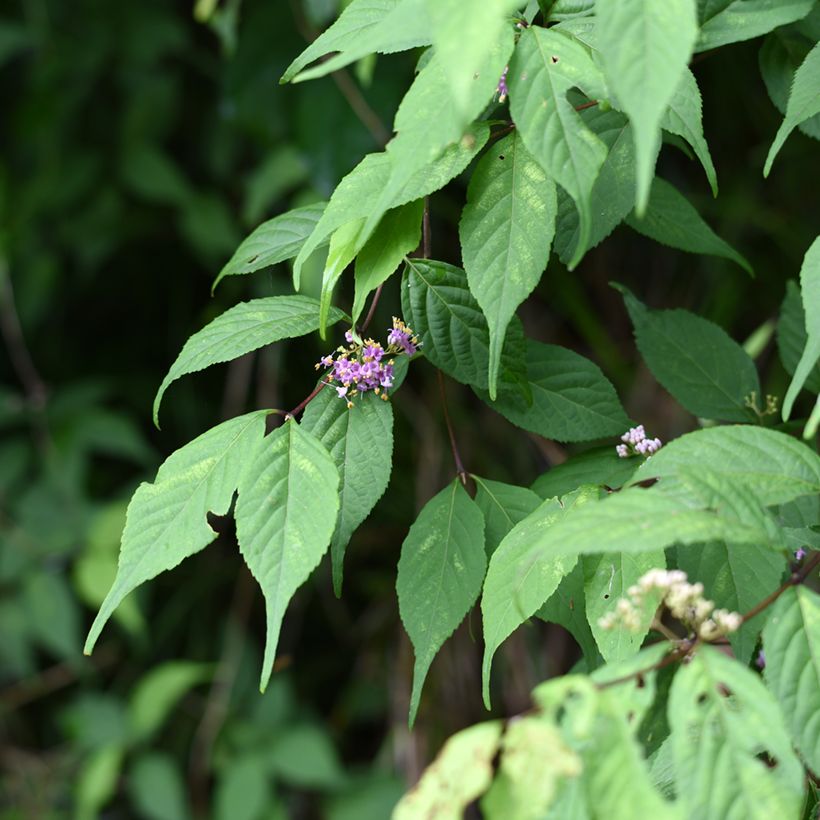





Plant habit
Flowering
Foliage
Botanical data
Callicarpa
japonica
Verbenaceae
Japanese beautyberry
Cultivar or hybrid
Other Callicarpa
View all →Planting and care
The Callicarpa japonica is an easy-to-grow bush, in deep and moist soil, regardless of the PH (slightly acidic, neutral or even alkaline). Plant it in a sunny or partially shaded location. Once mature, it is hardy down to -10/-12°C (14/10.4 °F), but it is advisable to protect it with mulch in the first few years, and possibly with a winter cover. Prune any branches that have been damaged by frost in winter, they will regrow from the base. Plant in groups of three to allow for pollination and therefore fruiting.
Planting period
Intended location
Care
Planting & care advice
This item has not been reviewed yet - be the first to leave a review about it.
Similar products
Haven't found what you were looking for?
Hardiness is the lowest winter temperature a plant can endure without suffering serious damage or even dying. However, hardiness is affected by location (a sheltered area, such as a patio), protection (winter cover) and soil type (hardiness is improved by well-drained soil).

Photo Sharing Terms & Conditions
In order to encourage gardeners to interact and share their experiences, Promesse de fleurs offers various media enabling content to be uploaded onto its Site - in particular via the ‘Photo sharing’ module.
The User agrees to refrain from:
- Posting any content that is illegal, prejudicial, insulting, racist, inciteful to hatred, revisionist, contrary to public decency, that infringes on privacy or on the privacy rights of third parties, in particular the publicity rights of persons and goods, intellectual property rights, or the right to privacy.
- Submitting content on behalf of a third party;
- Impersonate the identity of a third party and/or publish any personal information about a third party;
In general, the User undertakes to refrain from any unethical behaviour.
All Content (in particular text, comments, files, images, photos, videos, creative works, etc.), which may be subject to property or intellectual property rights, image or other private rights, shall remain the property of the User, subject to the limited rights granted by the terms of the licence granted by Promesse de fleurs as stated below. Users are at liberty to publish or not to publish such Content on the Site, notably via the ‘Photo Sharing’ facility, and accept that this Content shall be made public and freely accessible, notably on the Internet.
Users further acknowledge, undertake to have ,and guarantee that they hold all necessary rights and permissions to publish such material on the Site, in particular with regard to the legislation in force pertaining to any privacy, property, intellectual property, image, or contractual rights, or rights of any other nature. By publishing such Content on the Site, Users acknowledge accepting full liability as publishers of the Content within the meaning of the law, and grant Promesse de fleurs, free of charge, an inclusive, worldwide licence for the said Content for the entire duration of its publication, including all reproduction, representation, up/downloading, displaying, performing, transmission, and storage rights.
Users also grant permission for their name to be linked to the Content and accept that this link may not always be made available.
By engaging in posting material, Users consent to their Content becoming automatically accessible on the Internet, in particular on other sites and/or blogs and/or web pages of the Promesse de fleurs site, including in particular social pages and the Promesse de fleurs catalogue.
Users may secure the removal of entrusted content free of charge by issuing a simple request via our contact form.
The flowering period indicated on our website applies to countries and regions located in USDA zone 8 (France, the United Kingdom, Ireland, the Netherlands, etc.)
It will vary according to where you live:
- In zones 9 to 10 (Italy, Spain, Greece, etc.), flowering will occur about 2 to 4 weeks earlier.
- In zones 6 to 7 (Germany, Poland, Slovenia, and lower mountainous regions), flowering will be delayed by 2 to 3 weeks.
- In zone 5 (Central Europe, Scandinavia), blooming will be delayed by 3 to 5 weeks.
In temperate climates, pruning of spring-flowering shrubs (forsythia, spireas, etc.) should be done just after flowering.
Pruning of summer-flowering shrubs (Indian Lilac, Perovskia, etc.) can be done in winter or spring.
In cold regions as well as with frost-sensitive plants, avoid pruning too early when severe frosts may still occur.
The planting period indicated on our website applies to countries and regions located in USDA zone 8 (France, United Kingdom, Ireland, Netherlands).
It will vary according to where you live:
- In Mediterranean zones (Marseille, Madrid, Milan, etc.), autumn and winter are the best planting periods.
- In continental zones (Strasbourg, Munich, Vienna, etc.), delay planting by 2 to 3 weeks in spring and bring it forward by 2 to 4 weeks in autumn.
- In mountainous regions (the Alps, Pyrenees, Carpathians, etc.), it is best to plant in late spring (May-June) or late summer (August-September).
The harvesting period indicated on our website applies to countries and regions in USDA zone 8 (France, England, Ireland, the Netherlands).
In colder areas (Scandinavia, Poland, Austria...) fruit and vegetable harvests are likely to be delayed by 3-4 weeks.
In warmer areas (Italy, Spain, Greece, etc.), harvesting will probably take place earlier, depending on weather conditions.
The sowing periods indicated on our website apply to countries and regions within USDA Zone 8 (France, UK, Ireland, Netherlands).
In colder areas (Scandinavia, Poland, Austria...), delay any outdoor sowing by 3-4 weeks, or sow under glass.
In warmer climes (Italy, Spain, Greece, etc.), bring outdoor sowing forward by a few weeks.






























